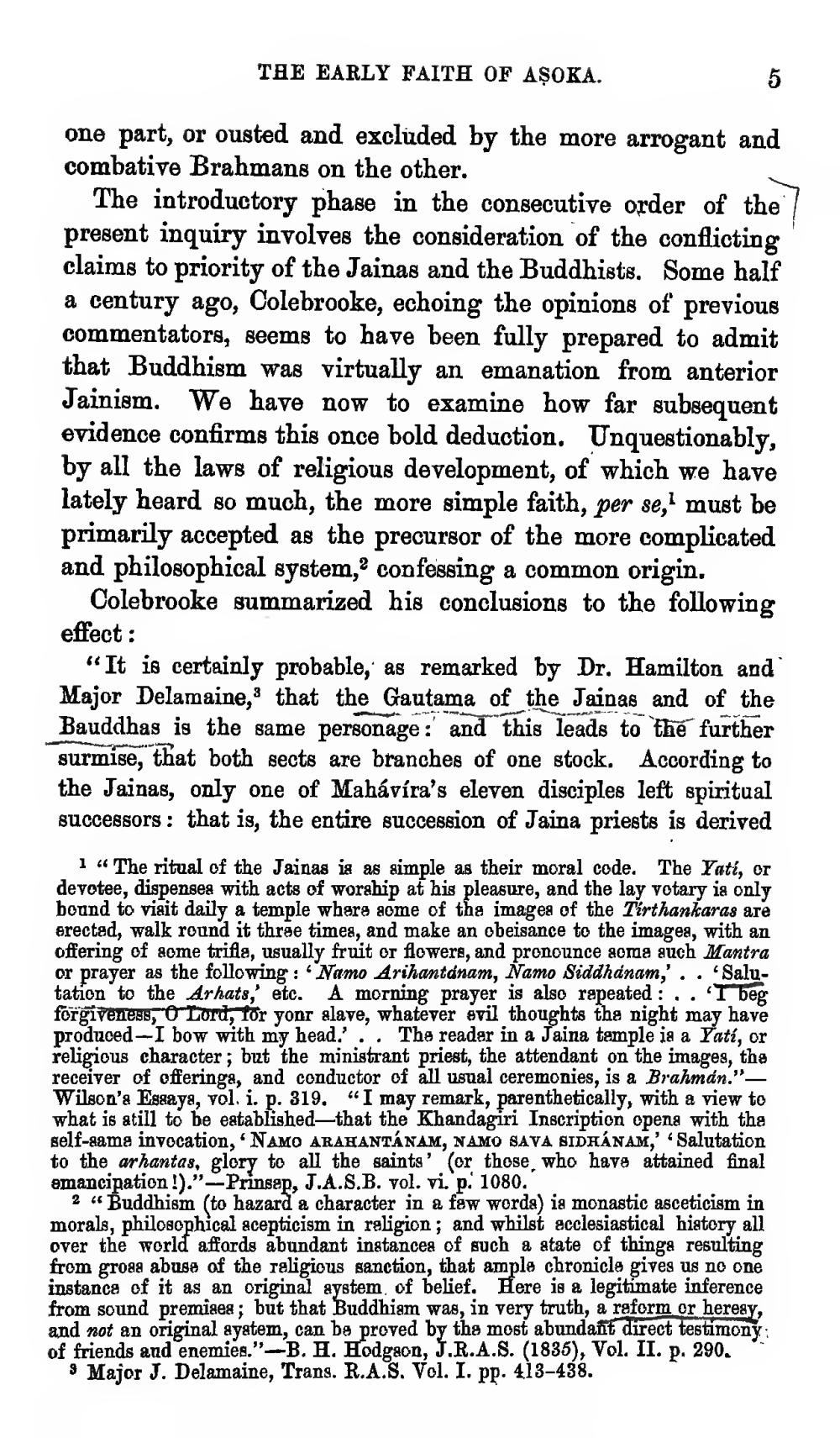________________
TAE EARLY FAITH OF AŞOKA.
one part, or ousted and excluded by the more arrogant and combative Brahmans on the other.
The introductory phase in the consecutive order of the l present inquiry involves the consideration of the conflicting claims to priority of the Jainas and the Buddhists. Some half a century ago, Colebrooke, echoing the opinions of previous commentators, seems to have been fully prepared to admit that Buddhism was virtually an emanation from anterior Jainism. We have now to examine how far subsequent evidence confirms this once bold deduction. Unquestionably, by all the laws of religious development, of which we have lately heard so much, the more simple faith, per se, must be primarily accepted as the precursor of the more complicated and philosophical system, confessing a common origin.
Colebrooke summarized his conclusions to the following effect:
"It is certainly probable, as remarked by Dr. Hamilton and Major Delamaine, that the Gautama of the Jainas and of the Bauddhas is the same personage: and this leads to the further surmise, that both sects are branches of one stock. According to the Jainas, only one of Mahávíra's eleven disciples left spiritual successors : that is, the entire succession of Jaina priests is derived
1 « The ritual of the Jainas ia as simple as their moral code. The Yati, or devotee, dispensea with acts of worship at his pleasure, and the lay votary is only bound to viait daily a temple where aome of the images of the Tirthankaras are erectad, walk round it three times, and make an obeisance to the imagea, with an offering of aome trifla, usually fruit or flowers, and pronounce aoma auch Mantra or prayer as the following: 'Namo Arihantanam, Namo Siddhanam,'. . Salutation to the Arhats, etc. A morning prayer is also repeated : .. 'I beg forgiveness, O Lord, for yonr alave, whatever evil thoughts the night may have produced-I bow with my head.' .. The reader in a Jaina tample ia a Yatí, or religious character; but the ministrant priest, the attendant on the images, the receiver of offerings, and conductor of all usual ceremonies, is a Brahmán."Wilson'a Essays, vol. i. p. 319. “I may remark, parenthetically, with a view to what is atill to be eatablished that the Khandagiri Inscription opena with the self-sama invocation, NAMO ARAHANTÁNAM, NAMO SAVA SIDHANAM,' 'Salutation to the arhantas, glory to all the saints' (or those who have attained final emancipation!)." --Prinsep, J.A.S.B. vol. vi. p. 1080.
2 "Buddhism (to hazard a character in a faw worda) ia monastic asceticism in morals, philosophical scepticism in religion; and whilst acclesiastical history all over the world affords abundant instances of such a state of things resulting from groaa abuse of the religious sanction, that ample chronicle gives us no one instance of it as an original aystem of belief. Here is a legitimate inference from sound premiaea; but that Buddhism was, in very truth, a reform or heresy, and not an original ayatem, can be proved by the most abundant direct testimony: of friends and enemies." -B. H. Hodgaon, J.R.A.S. (1835), Vol. II. p. 290.
9 Major J. Delamaine, Trans. R.A.S. Vol. I. pp. 413-438.




